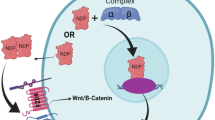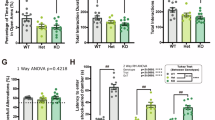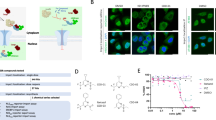Abstract
Nuclear import receptors of the KPNA family recognize the nuclear localization signal in proteins and together with importin-β mediate translocation into the nucleus. Accordingly, KPNA family members have a highly conserved architecture with domains that contact the nuclear localization signal and bind to importin-β. Here, we describe autosomal recessive mutations in KPNA7 found by whole exome sequencing in a sibling pair with severe developmental disability, infantile spasms, subsequent intractable epilepsy consistent with Lennox–Gastaut syndrome, partial agenesis of the corpus callosum, and cerebellar vermis hypoplasia. The mutations mapped to exon 7 in KPNA7 result in two amino-acid substitutions, Pro339Ala and Glu344Gln. On the basis of the crystal structure of the paralog KPNA2 bound to a bipartite nuclear localization signal from the retinoblastoma protein, the amino-acid substitutions in the affected subjects were predicted to occur within the seventh armadillo repeat that forms one of the two nuclear localization signal-binding sites in KPNA family members. Glu344 is conserved in all seven KPNA proteins, and we found that the Glu354Gln mutation in KPNA2 is sufficient to reduce binding to the retinoblastoma nuclear localization signal to approximately one-half that of wild-type protein. Our data show that compound heterozygous mutations in KPNA7 are associated with a human neurodevelopmental disease, and provide the first example of a human disease associated with mutation of a nuclear transport receptor.
Similar content being viewed by others
Log in or create a free account to read this content
Gain free access to this article, as well as selected content from this journal and more on nature.com
or
References
Pemberton LF, Paschal BM : Mechanisms of receptor-mediated nuclear import and nuclear export. Traffic 2005; 6: 187–198.
Marfori M, Mynott A, Ellis JJ et al: Molecular basis for specificity of nuclear import and prediction of nuclear localization. Biochim Biophys Acta 2011; 1813: 1562–1577.
Terry LJ, Shows EB, Wente SR : Crossing the nuclear envelope: hierarchical regulation of nucleocytoplasmic transport. Science 2007; 318: 1412–1416.
Ye W, Lin W, Tartakoff AM, Tao T : Karyopherins in nuclear transport of homeodomain proteins during development. Biochim Biophys Acta 2011; 1813: 1654–1662.
Major AT, Whiley PAF, Loveland KL : Expression of nucleocytoplasmic transport machinery: clues to regulation of spermatogenic development. Biochim Biophys Acta 2011; 1813: 1668–1688.
Yasuhara N, Shibazaki N, Tanaka S et al: Triggering neural differentiation of ES cells by subtype switching of importin-alpha. Nat Cell Biol 2007; 9: 72–79.
Strømme P, Mangelsdorf ME, Scheffer IE, Gécz J : Infantile spasms, dystonia, and other X-linked phenotypes caused by mutations in Aristaless related homeobox gene, ARX. Brain Dev 2002; 24: 266–268.
Amiel J, Rio M, De Pontual L et al: Mutations in TCF4, encoding a class I basic helix–loop–helix transcription factor, are responsible for Pitt–Hopkins syndrome, a severe epileptic encephalopathy associated with autonomic dysfunction. Am J Hum Genet 2007; 80: 988–993.
Dastot-Le Moal F, Wilson M, Mowat D, Collot N, Niel F, Goossens M : ZFHX1B mutations in patients with Mowat–Wilson syndrome. Hum Mutat 2007; 28: 313–321.
Le Meur N, Holder-Espinasse M, Jaillard S et al: MEF2C haploinsufficiency caused by either microdeletion of the 5q14.3 region or mutation is responsible for severe mental retardation with stereotypic movements, epilepsy and/or cerebral malformations. J Med Genet 2010; 47: 22–29.
Ariani F, Hayek G, Rondinella D et al: FOXG1 is responsible for the congenital variant of Rett syndrome. Am J Hum Genet 2008; 83: 89–93.
Kato M, Dobyns WB : X-linked lissencephaly with abnormal genitalia as a tangential migration disorder causing intractable epilepsy: proposal for a new term, ‘interneuronopathy’. J Child Neurol 2005; 20: 392–397.
Mowat DR, Wilson MJ, Goossens M : Mowat–Wilson syndrome. J Med Genet 2003; 40: 305–310.
Kortüm F, Das S, Flindt M et al: The core FOXG1 syndrome phenotype consists of postnatal microcephaly, severe mental retardation, absent language, dyskinesia, and corpus callosum hypogenesis. J Med Genet 2011; 48: 396–406.
Lux AL, Osborne JP : A proposal for case definitions and outcome measures in studies of infantile spasms and West syndrome: consensus statement of the West Delphi group. Epilepsia 2004; 45: 1416–1428.
Paciorkowski AR, Thio LL, Dobyns WB : Genetic and biologic classification of infantile spasms. Pediatr Neurol 2011; 45: 355–367.
Fontes MRM, Teh T, Jans D, Brinkworth RI, Kobe B : Structural basis for the specificity of bipartite nuclear localization sequence binding by importin-alpha. J Biol Chem 2003; 278: 27981–27987.
Guex N, Peitsch MC : SWISS-MODEL and the Swiss-PdbViewer: an environment for comparative protein modeling. Electrophoresis 1997; 18: 2714–2723.
Arnold K, Bordoli L, Kopp J, Schwede T : The SWISS-MODEL workspace: a web-based environment for protein structure homology modelling. Bioinformatics 2006; 22: 195–201.
Kelley JB, Talley AM, Spencer A, Gioeli D, Paschal BM : Karyopherin alpha7 (KPNA7), a divergent member of the importin alpha family of nuclear import receptors. BMC Cell Biol 2010; 11: 63.
Goldfarb DS, Corbett AH, Mason DA, Harreman MT, Adam SA : Importin alpha: a multipurpose nuclear-transport receptor. Trends Cell Biol 2004; 14: 505–514.
Conti E, Uy M, Leighton L, Blobel G, Kuriyan J : Crystallographic analysis of the recognition of a nuclear localization signal by the nuclear import factor karyopherin alpha. Cell 1998; 94: 193–204.
Fontes MR, Teh T, Kobe B : Structural basis of recognition of monopartite and bipartite nuclear localization sequences by mammalian importin-alpha. J Mol Biol 2000; 297: 1183–1194.
Lin W, Ye W, Cai L et al: The roles of multiple importins for nuclear import of murine aristaless-related homeobox protein. J Biol Chem 2009; 284: 20428–20439.
Hu J, Wang F, Yuan Y et al: Novel importin-alpha family member Kpna7 is required for normal fertility and fecundity in the mouse. J Biol Chem 2010; 285: 33113–33122.
Shoubridge C, Tan MH, Fullston T et al: Mutations in the nuclear localization sequence of the Aristaless related homeobox; sequestration of mutant ARX with IPO13 disrupts normal subcellular distribution of the transcription factor and retards cell division. Pathogenetics 2010; 3: 1.
Tejomurtula J, Lee K-B, Tripurani SK, Smith GW, Yao J : Role of importin alpha8, a new member of the importin alpha family of nuclear transport proteins, in early embryonic development in cattle. Biol Reprod 2009; 81: 333–342.
Wang X, Park K-E, Koser S, Liu S, Magnani L, Cabot RA : KPNA7 an oocyte- and embryo-specific karyopherin α subtype, is required for porcine embryo development. Reprod Fertil Dev 2012; 24: 382–391.
Ly-Huynh JD, Lieu KG, Major AT et al: Importin alpha2-interacting proteins with nuclear roles during mammalian spermatogenesis. Biol Reprod 2011; 85: 1191–1202.
Courchesne E, Yeung-Courchesne R, Press GA, Hesselink JR, Jernigan TL : Hypoplasia of cerebellar vermal lobules VI and VII in autism. N Engl J Med 1988; 318: 1349–1354.
Aldinger KA, Lehmann OJ, Hudgins L et al: FOXC1 is required for normal cerebellar development and is a major contributor to chromosome 6p25.3 Dandy–Walker malformation. Nat Genet 2009; 41: 1037–1042.
Acknowledgements
We thank the families of our research subjects for sharing details of their children’s condition with us. ARP is supported by K08NS078054, WBD is supported by R01NS058721, and BMP is supported by R01AG040162.
Author information
Authors and Affiliations
Corresponding author
Ethics declarations
Competing interests
The authors declare no conflict of interest.
Additional information
Supplementary Information accompanies this paper on European Journal of Human Genetics website
Supplementary information
Rights and permissions
About this article
Cite this article
Paciorkowski, A., Weisenberg, J., Kelley, J. et al. Autosomal recessive mutations in nuclear transport factor KPNA7 are associated with infantile spasms and cerebellar malformation. Eur J Hum Genet 22, 587–593 (2014). https://doi.org/10.1038/ejhg.2013.196
Received:
Revised:
Accepted:
Published:
Issue date:
DOI: https://doi.org/10.1038/ejhg.2013.196
Keywords
This article is cited by
-
NPM2 in malignant peritoneal mesothelioma: from basic tumor biology to clinical medicine
World Journal of Surgical Oncology (2022)
-
An epilepsy-associated mutation in the nuclear import receptor KPNA7 reduces nuclear localization signal binding
Scientific Reports (2020)
-
Lessons learned from gene identification studies in Mendelian epilepsy disorders
European Journal of Human Genetics (2016)



